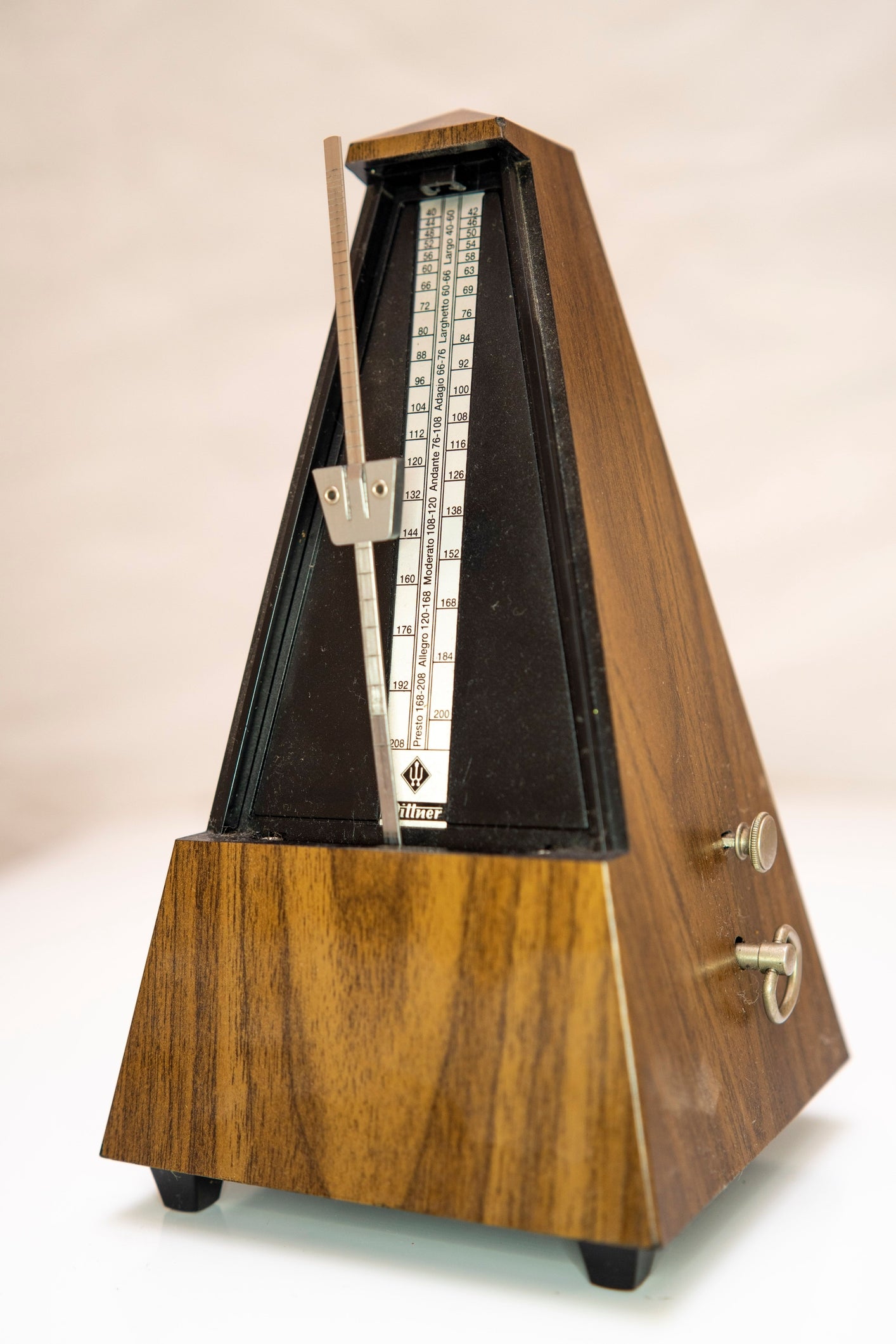1-(800)-642-0011
1-(800)-642-0011

In the world of music, the metronome is a crucial tool for musicians to keep time and maintain a steady tempo. But beyond its musical applications, the metronome has an interesting connection to the world of horology and timekeeping.
The metronome was invented in the early 19th century by a German inventor named Johann Nepomuk Maelzel. Maelzel was a man of many talents, known for his work as a musician, inventor, and showman. He is also credited with developing the first mechanically-operated music-playing device, the panharmonicon.
Maelzel's invention of the metronome was a response to the need for a more precise and reliable way to measure time in music. Prior to the metronome, musicians relied on a conductor's gestures or other imprecise methods to keep time. The metronome, with its regular, audible ticks, provided a consistent reference point for musicians to follow.
The design of Maelzel's metronome was inspired by the escapement mechanism used in mechanical clocks and watches. The escapement is a critical component in timekeeping devices, regulating the release of energy to ensure the accurate measurement of time. Maelzel incorporated a similar mechanism into his metronome, using a pendulum to control the regularity of the beats.
The metronome quickly gained popularity among musicians, composers, and music teachers as a valuable tool for practicing and performing. It allowed for a more precise interpretation of musical notation, ensuring that the intended tempo and rhythm of a piece of music would be accurately conveyed.
Interestingly, the metronome's influence extended beyond the realm of music. The concept of keeping time and maintaining a steady rhythm was also important in other areas, such as dance, athletics, and even factory production. The metronome became a symbol of precision and synchronicity, representing the ideals of efficiency and accuracy.
In the world of horology, the connection between the metronome and timekeeping is not only conceptual but also technical. The mechanical principles employed in the metronome's design are similar to those used in mechanical timekeeping devices such as watches and clocks. The escapement mechanism, which controls the release of energy and ensures the accurate measurement of time, is a fundamental component shared by both.
The metronome and its connection to the world of timekeeping and horology exemplify the interplay between music and science, art and technology. It represents a convergence of disciplines and a mutual appreciation for precision, rhythm, and the passage of time. Whether used in music practice rooms or displayed as a nostalgic piece of decor, the metronome serves as a reminder of the intricate relationship between music, timekeeping, and the human pursuit of rhythm and harmony.